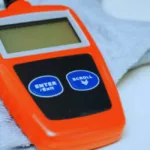In 2015, the renowned Japanese automaker, Toyota, introduced its cutting-edge Toyota Safety Sense (TSS) advanced driver assistance systems(ADAS). This innovative technology comprised three primary functions: automatic high beam, lane departure alert, and a pre-collision system. The system was equipped with a forward-facing camera and a millimetre-wave radar, providing additional functionalities like adaptive cruise control and road sign assist.
Fast forward to the latest iterations, Toyota Safety Sense 2.5 and 2.5+, these versions boast enhanced features aimed at preventing or mitigating collisions, ensuring vehicles stay centred in their lanes, and enhancing safety during nighttime driving. The overarching goal is to render road accidents a relic of the past, achieved through the continual evolution of technology.
In 2022, Toyota unveiled its pinnacle of Advanced Driver Assistance Systems (ADAS) technology, Toyota Teammate, in the second-generation Toyota Mirai Fuel Cell Electric Vehicle (FCEV). This state-of-the-art system goes beyond conventional safety measures to ensure the well-being of vehicle occupants. The latest Toyota Teammate includes a Level 2 hands-free driving technology and an automatic parking feature, adding convenience and enjoyment to the driving experience.
Toyota Safety Sense 2.5 and 2.5+: How does it work?
Delving into the functionality of Toyota Safety Sense 2.5 and 2.5+, these versions encompass six core functions that unlock even more capabilities for a safer drive. The pre-collision system, for instance, can adeptly detect vehicles and pedestrians in both daytime and low-light scenarios. Additionally, it identifies bicyclists during the day, providing visual and audible alerts to caution the driver. Should the system detect a lack of response from the driver, it automatically engages the brakes to bring the vehicle to a halt.
Additionally, the enhanced pre-collision system now encompasses intersection support and emergency steering assist. The former identifies vehicles and pedestrians during left or right-hand turns, while the latter aids in stabilizing the vehicle during sudden manoeuvres by the driver to evade obstacles.
Moreover, TSS 2.5 and 2.5+ incorporate comprehensive dynamic radar cruise control, covering full-speed capabilities along with low-speed following, stopping, speed matching, acceleration, and deceleration functionalities. In the case of TSS 2.5+, curve speed management is integrated, utilizing the camera and built-in yaw sensors to adjust the vehicle speed when navigating curves. Additional TSS features encompass lane tracing assist and road sign assist.
Toyota Teammate
 Transitioning to Toyota Teammate, the second-generation Toyota Mirai, unveiled in 2022, stands as the brand’s first production vehicle to feature the standard Toyota Teammate with advanced ADAS capabilities. Introducing two new core functions – Advanced Drive and Advanced Park – this technology made its debut in the Lexus LS 500h for the 2022 model year.
Transitioning to Toyota Teammate, the second-generation Toyota Mirai, unveiled in 2022, stands as the brand’s first production vehicle to feature the standard Toyota Teammate with advanced ADAS capabilities. Introducing two new core functions – Advanced Drive and Advanced Park – this technology made its debut in the Lexus LS 500h for the 2022 model year.
Advanced Drive facilitates Level 2 semi-autonomous, hands-free driving on selected highways, akin to GM’s Super Cruise and Ford’s BlueCruise. It not only keeps the vehicle within the lane but also enables it to follow other cars, change lanes, and execute overtaking manoeuvres. Meanwhile, Advanced Park employs circumferential cameras and 360-degree ultrasonic sensors to autonomously park the vehicle, handling parallel parking duties with zero driver intervention.
Despite the automotive industry being a step away from achieving Level 4 or Level 5 full self-driving automation, the journey towards this goal faces challenges such as rising inflation and global conflicts. Consequently, experts have revised the timeline for the commercialization of self-driving cars to 2035. However, the silver lining is the imminent arrival of Level 3 autonomous cars in showrooms around mid-2025, followed closely by Level 4 autonomous vehicles. Until then, advanced driving assistance systems stand out as the next best solution.










